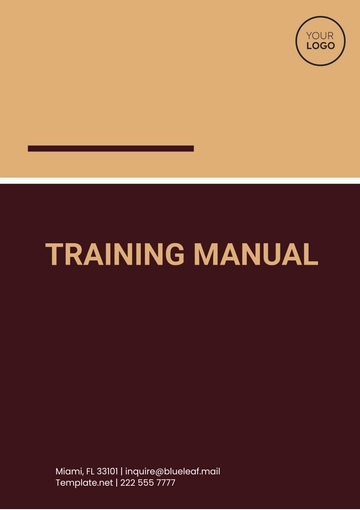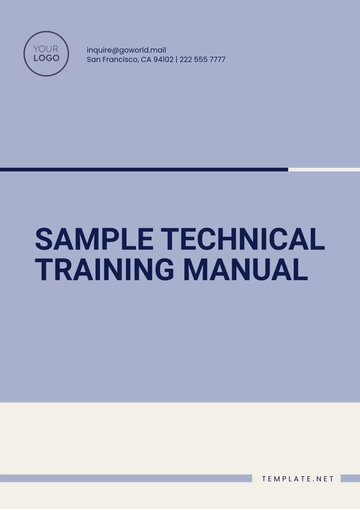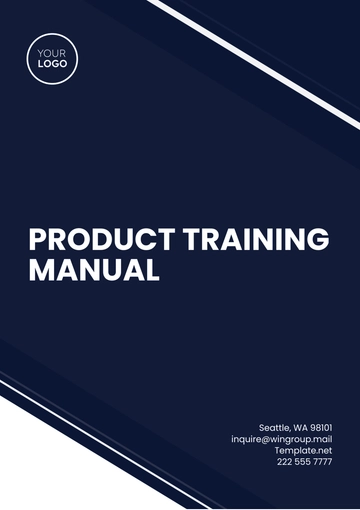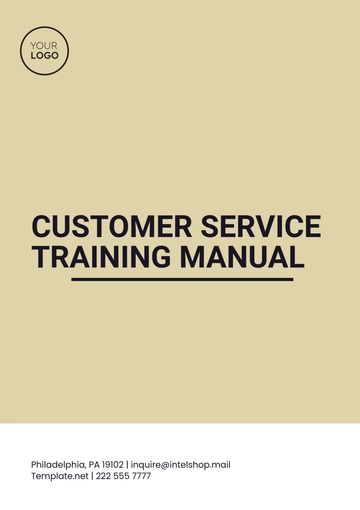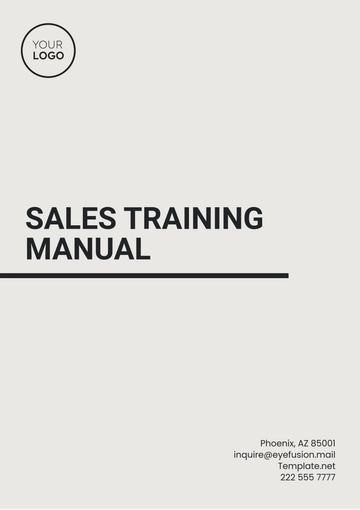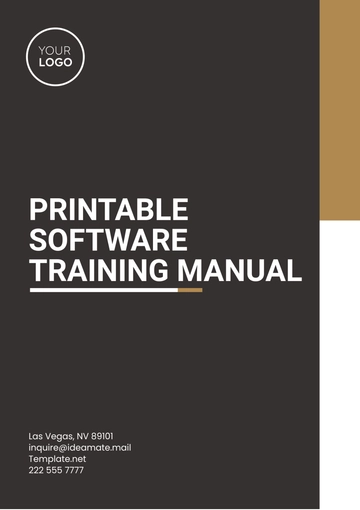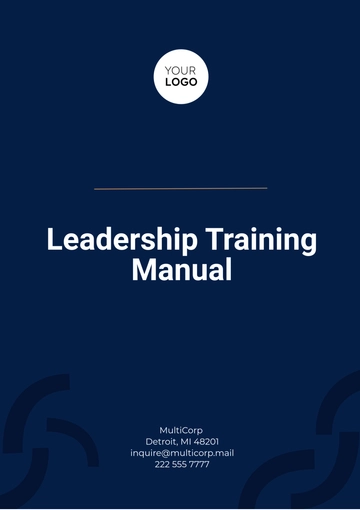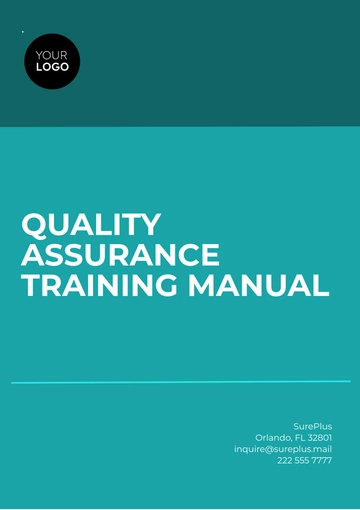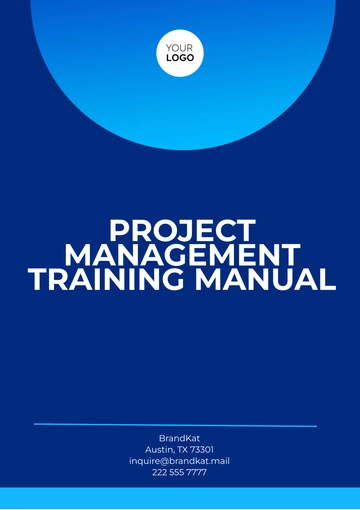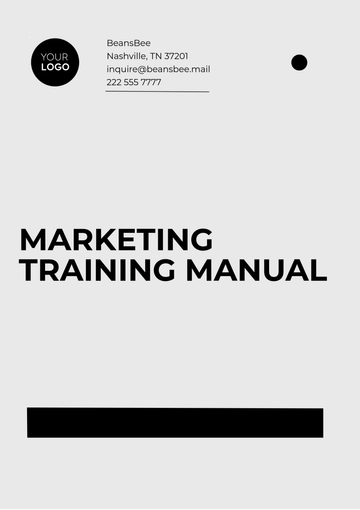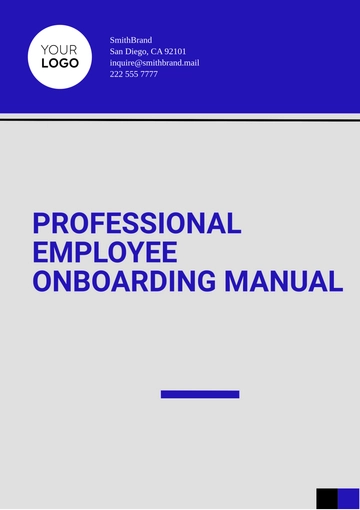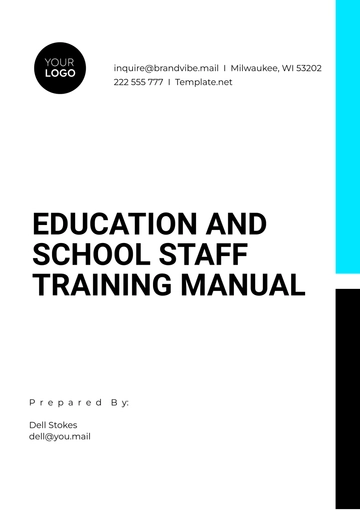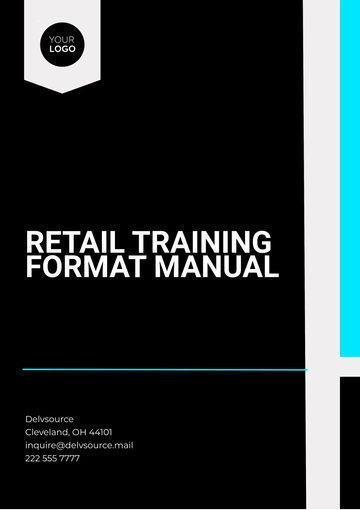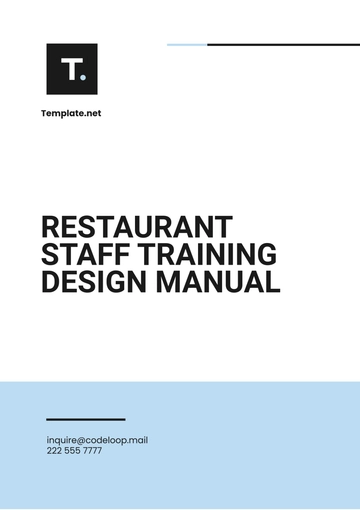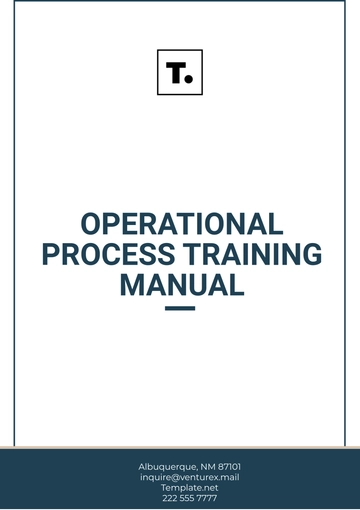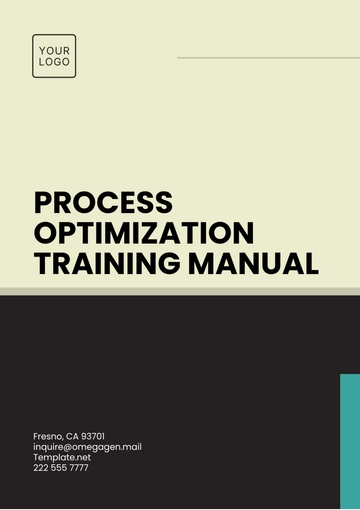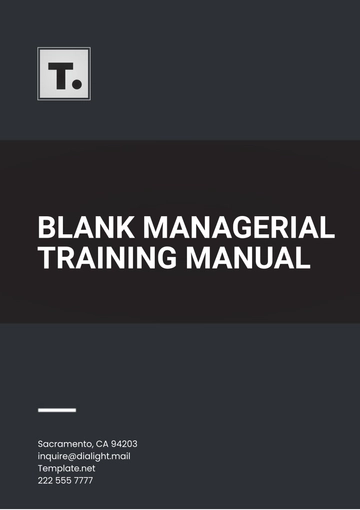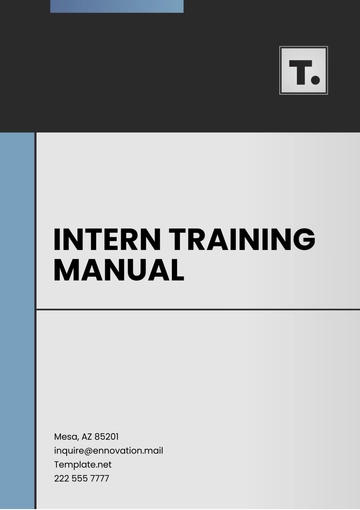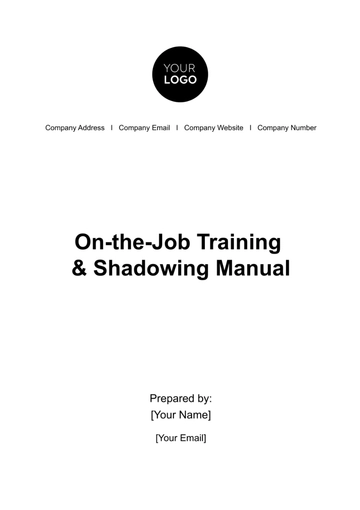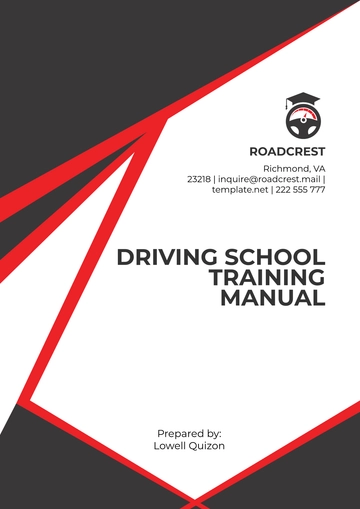Free Management Training Manual

Prepared By | [YOUR NAME] |
|---|---|
Company | [YOUR COMPANY NAME] |
Department | [YOUR DEPARTMENT] |
Date | [CURRENT DATE] |
I. Introduction
Welcome to the [YOUR COMPANY NAME] Management Training Manual. This comprehensive guide is designed to equip managers with the essential skills and knowledge needed to excel in their roles. Whether you're a seasoned manager or new to leadership, this manual will provide valuable insights and resources to help you succeed.
In this section, you'll find an overview of the manual's contents, as well as guidelines on how to use it effectively. [YOUR NAME], [Your Title] at [YOUR COMPANY NAME], has curated this manual to ensure that managers receive the training they need to drive success in their teams and contribute to the overall goals of the organization.
A. About This Manual
The Management Training Manual is divided into several sections, each covering a different aspect of managerial responsibilities. From communication strategies to performance management techniques, you'll find a wealth of information to enhance your leadership skills. Each section includes practical tips, real-world examples, and actionable steps to apply in your day-to-day management tasks.
B. How to Use This Manual
To get the most out of this manual, we recommend following these steps:
Review Each Section: Take the time to read through each section carefully to gain a comprehensive understanding of the content.
Apply What You Learn: As you read, think about how you can apply the concepts and strategies in your role as a manager.
Seek Feedback: Don't hesitate to seek feedback from peers, mentors, or supervisors as you implement new techniques.
Continuously Improve: Leadership is an ongoing journey. Continuously seek opportunities to learn and grow as a manager.
II. Leadership Fundamentals
In this section, we'll explore the fundamental principles of effective leadership and management. From defining your leadership style to setting clear expectations for your team, these concepts form the foundation of successful management.
A. Understanding Your Leadership Style
Every manager has a unique leadership style that influences how they interact with their team and make decisions. By understanding your leadership style, you can leverage your strengths and adapt your approach to different situations.
[YOUR NAME], [Your Title], suggests using the following framework to identify your leadership style:
Autocratic Leadership: In this style, the manager makes decisions independently and with little input from team members. While it can be efficient in certain situations, it may lead to low morale and disengagement.
Democratic Leadership: Democratic leaders involve team members in the decision-making process, fostering a sense of ownership and empowerment. This approach can lead to higher levels of motivation and creativity.
Laissez-Faire Leadership: Laissez-faire leaders provide minimal guidance and allow team members to make their own decisions. While it can promote autonomy, it may result in confusion and lack of direction.
B. Setting Clear Expectations
One of the key responsibilities of a manager is to set clear expectations for their team. Without clear guidelines, employees may struggle to understand their roles and responsibilities, leading to frustration and underperformance.
To set clear expectations, [YOUR NAME] recommends the following steps:
Define Goals and Objectives: Clearly define the goals and objectives that your team is working towards. Ensure that each team member understands how their individual contributions support the broader organizational goals.
Communicate Expectations: Clearly communicate your expectations regarding performance, behavior, and deadlines. Use both verbal and written communication to ensure clarity.
Provide Feedback: Regularly provide feedback to your team members on their performance. Recognize achievements and address areas for improvement promptly and constructively.
III. Effective Communication Strategies
Communication is a cornerstone of effective management. In this section, we'll explore strategies for improving communication with your team, peers, and superiors. From active listening techniques to delivering impactful presentations, mastering communication skills is essential for success as a manager.
A. Active Listening
Active listening is a crucial skill for managers to develop, as it fosters trust, understanding, and collaboration within teams. To practice active listening, [YOUR NAME] recommends the following techniques:
Focus on the Speaker: Give the speaker your full attention, maintain eye contact, and avoid distractions.
Demonstrate Empathy: Show empathy by acknowledging the speaker's feelings and validating their perspective.
Ask Clarifying Questions: Seek clarification to ensure that you understand the speaker's message accurately.
Summarize Key Points: Summarize what you've heard to confirm understanding and demonstrate that you've been listening attentively.
By mastering active listening, you can build stronger relationships with your team members and cultivate a culture of open communication.
B. Delivering Effective Presentations
As a manager, you'll often be called upon to deliver presentations to various stakeholders, from team meetings to boardrooms. Effective presentation skills are essential for conveying your message clearly and persuasively.
To deliver effective presentations, consider the following tips:
Know Your Audience: Tailor your presentation to the needs and interests of your audience. Consider their level of expertise, preferences, and potential concerns.
Structure Your Content: Organize your content in a logical and easy-to-follow manner, with a clear introduction, main points, and conclusion.
Use Visual Aids Wisely: Incorporate visual aids such as slides or graphs to enhance understanding and engagement, but avoid overcrowding slides with text.
Practice Delivery: Rehearse your presentation multiple times to ensure smooth delivery and confidence in your message.
By honing your presentation skills, you can effectively communicate your ideas and inspire action from your audience.
IV. Performance Management
Performance management is a critical aspect of managerial responsibility, involving setting goals, providing feedback, and fostering employee development. In this section, we'll explore strategies for effectively managing performance and driving continuous improvement within your team.
A. Setting SMART Goals
Setting clear and achievable goals is essential for guiding your team towards success. The SMART criteria provide a framework for setting goals that are Specific, Measurable, Achievable, Relevant, and Time-bound.
When setting goals for your team, ensure that they meet the following criteria:
Specific: Clearly define what needs to be accomplished, why it's important, and who is responsible.
Measurable: Establish concrete criteria for measuring progress and success.
Achievable: Ensure that the goal is realistic and attainable given the resources and constraints.
Relevant: Align the goal with the broader objectives of the team and organization.
Time-bound: Set a deadline or timeline for achieving the goal to create a sense of urgency and accountability.
By setting SMART goals, you can provide clarity and direction for your team, increasing motivation and productivity.
B. Providing Feedback and Coaching
Feedback and coaching are essential tools for driving employee development and performance improvement. As a manager, it's important to provide regular feedback and support to help your team members reach their full potential.
When providing feedback, [YOUR NAME] suggests following these guidelines:
Be Timely: Provide feedback promptly, both positive and constructive, to ensure its relevance and impact.
Be Specific: Clearly articulate what the employee did well or could improve, providing specific examples and observations.
Be Constructive: Frame feedback in a constructive and supportive manner, focusing on solutions and development opportunities.
Encourage Two-Way Communication: Create an open and supportive environment where employees feel comfortable sharing their thoughts and concerns.
By providing regular feedback and coaching, you can empower your team members to grow and succeed in their roles.
V. Conclusion
Congratulations on completing the[YOUR COMPANY NAME] Management Training Manual! We hope that you've found the content informative and valuable for your role as a manager. Remember, effective leadership is a continuous journey of learning and growth.
As you apply the strategies and techniques outlined in this manual, we encourage you to adapt them to your unique leadership style and the specific needs of your team. By investing in your development as a manager, you'll not only drive success within your team but also contribute to the overall success of the organization.
Thank you for your commitment to excellence in management. If you have any questions or feedback on the manual, please don't hesitate to reach out to [YOUR NAME] or the [YOUR DEPARTMENT] team.
- 100% Customizable, free editor
- Access 1 Million+ Templates, photo’s & graphics
- Download or share as a template
- Click and replace photos, graphics, text, backgrounds
- Resize, crop, AI write & more
- Access advanced editor
Discover unparalleled efficiency with the Management Training Manual Template from Template.net. Crafted for versatility, it's fully editable and customizable to suit your specific needs. Harness the power of our AI Editor Tool to effortlessly tailor content. Elevate your training programs with this dynamic resource.
